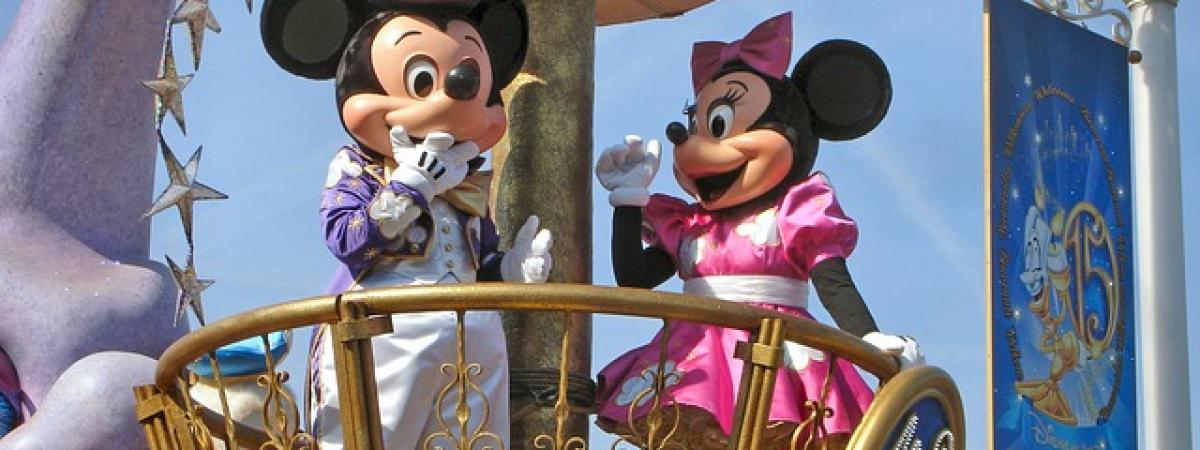Medical Fairytales
published in Reader's Digest,
11 July 2019

Peter Pan DNA, Cinderella diseases and diagnosis aided by Disney? The worlds of fantasy and medicine are more closely entwined than you might think.
Explanation and education
Some of the best-loved characters in children’s literature have been given a wider fame because doctors refer to them to help explain complex syndromes and symptoms.
Writers of fairy tales and fiction meanwhile often weave clinical cases into their characters, educating (and enchanting) their readers with deeper truths and insights, opening conversations, removing stigma and raising awareness.
Here are seven examples of when the two worlds collide.
Peter Pan DNA
Brooke Greenberg lived with “Syndrome X”, a condition causing her to cease growing and to remain physically and mentally frozen as a child until her premature death at the age of 20. Scientists are studying her “Peter Pan genes” in the hope that they may reveal secrets about ageing.
DNA is unbelievably complex; in many cases a picture (in this case of Peter Pan) is worth a thousand words; light relief from the language of telomeres, epigenetic messages and heat shock proteins involved in ageing.
Mickey Mouse signs
When doctors detect three close circles on body scans, they commonly refer to sighting of the “Mickey Mouse sign” since the shape seen can look a lot like Mickey.
Seen on an ultrasound scan, the Mickey Mouse sign can diagnose blood clots in the leg and brain abnormalities in developing babies. If red blood cells in the urine take on the appearance of Mickey, it may be a sign of kidney trouble.
When diagnosing progressive supranuclear palsy (a degenerative brain disease), doctors use MRI scans to look not only for the Mickey Mouse sign but also for the hummingbird sign and the morning glory sign. It is true that pictures are more powerful than words.
Alice in Wonderland growth elixir
When Alice nibbled the cookie inside the box that was famously marked “Eat me”, she grew bigger and bigger until her head struck the roof of the hall.
Children with growth hormone deficiency grow slowly. Doctors can replace the missing hormone by prescribing a man-made version of it in drug form. “Better than Alice in Wonderland’s Growth Elixir” is how Dr Paul Saenger from the Albert Einstein College of Medicine described these drugs, since they can help children return to the height expected for their age.
Sleeping Beauty Syndrome
In Kleine-Levin syndrome, people sleep excessively and become bedridden and uncommunicative for days, weeks or months at a time before returning to apparent perfect health. The disorder “robs children and young adults of big pieces of their lives, one agonizing episode at a time”.
Cinderella diseases
When Cinderella had done her work, she used to go to the chimney corner and sit down among the cinders and ashes to keep warm. Thus she came to be called Cinderella. There is a type of skin disease called Cinderella or ashy dermatosis, since the skin is covered in bluish-grey patches rather like ash from the fire.
The term ‘Cinderella disease’ is also used in scientific literature to describe those diseases which are rather poorly researched and funded, just as Cinderella in the fairy tale wore rags whilst her sisters wore fine dresses.
Death in Disney
It is not until about ten years of age that children understand that death is irreversible, permanent and inevitable, according to Meredith Cox from the College of New Jersey. She writes that “fairy tales can help children tackle their darkest and scariest thoughts about separation, rejection, abandonment and death”.
The Lion King, for example, helpfully portrays “a gamut of typical grieving emotions, with self-blame, anger and sadness seen”. Less helpful is the death of the mother in Bambi, when grief is absent. “That the loved one can always be a part of them, even after death, is seen when Musafa returns to communicate with Simba in the Lion King”.
Mental health in Milne’s work
A group of doctors wonder whether Winnie-the-Pooh displays signs of ADHD and Obsessive Compulsive Disorder, being fixated on honey and somewhat inattentive. Anxious, blushing, flustered little Piglet might suffer from Generalised Anxiety Disorder, whilst Tigger is likely to be hyperactive and Eeyore clearly depressed. Might Milne’s work serve as a springboard for discussion about mental health matters in children?
Einstein once said, “If you want your child to be intelligent, read them fairy tales. If you want them to be more intelligent, read them more fairy tales.” Children’s classic literature might just help to enlighten and enchant children and adults alike, whilst also helping doctors explain some serious science.
